I’ve mostly had pretty good to medium luck using seaweed, bladderwrack specifically, as a film developer, but I live in Reno Nevada on the western edge of the Great Basin, bladderwrack for seaweed developer is just not that readily available out here.
I thought that maybe I should try to make developer out of something a little more ubiquitous than bladderwrack. Being on the edge of the Great Basin (near the foothills of the Sierras) sagebrush grows abundantly in these parts, it’s in vacant lots, in peoples yards and covers whole hillsides as you get away from the center of town.
I’d like to be clear at the outset that none of this is original thinking on my part. I first heard of using seaweed as a developer when I stumbled upon Kim Conway’s amazing research she did with The Sustainable Darkroom. Researching a little further, I found Dagie’s amazing site Yumyumsoups, where she makes film developer out of every organic thing that I could never imagine. There she had an article where she made developer out of “cowboy sage” or Artemisia Californica. It occurred to me that if such a huge range of plants, including a kind of sagebrush, could be turned into viable film developers, then the sagebrush that grows around Reno would probably work as well.
It took quite a while from thinking about it to acting on it, but I finally went in search of sagebrush. Time for another disclaimer, I’m not a botanist at all, so my claims about the various species of sagebrush I’ve encountered might be total bull. I guess there is some contention even among botanists about what’s what when it comes to Artemisia.
The Pedantic Part
If you’ve read this far, I hope you won’t might if I include a few things that I’ve learned about Artemisia. You would think I’d already have known some of this, having lived in the Great Basin for many years and admired the abundant sagebrush for all that time, but no, I was amazingly ignorant of a plant that grows seemingly all around me.
Sagebrush is a fragrant, usually evergreen plant, classified as a shrub, it can take on an array of forms from low ground hugging shrubs under 2 feet tall to much larger tree like plants over 8 feet tall. I always thought of sagebrush as a desert plant. It turns out that’s not usually the case, it more often grows in steppes or grassy areas that get a bit more water than true deserts. Sagebrush, Artemisia is not a true sage at all (sages are members of the mint family) but a member of the sunflower family.
The Search
Riding my cargo bike to the outskirts of Reno it dawned on me that there was more than one kind of sagebrush growing, there were a few taller (some more than 6ft.) scragglier plants with thick woody stems, almost trunks and flatter tri-lobed leaves, to my mind they’re more like scraggly trees than shrubs, these turned out to be Big Sagebrush or Artemisia Tridentata.
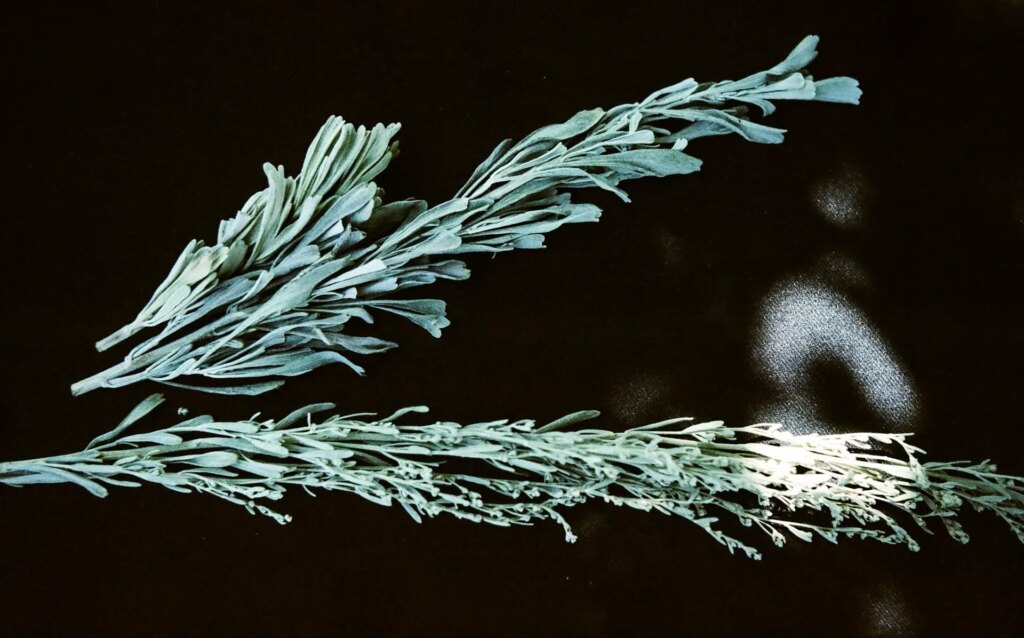
More common and growing amongst and around the Big Sagebrush was a lower rounder kind of Sagebrush, many don’t seem to have a stalk at all, their stalks and leaves seem to emerge directly from the ground when seen from a distance. I think these are Silver Sage or Artemisia Cana.
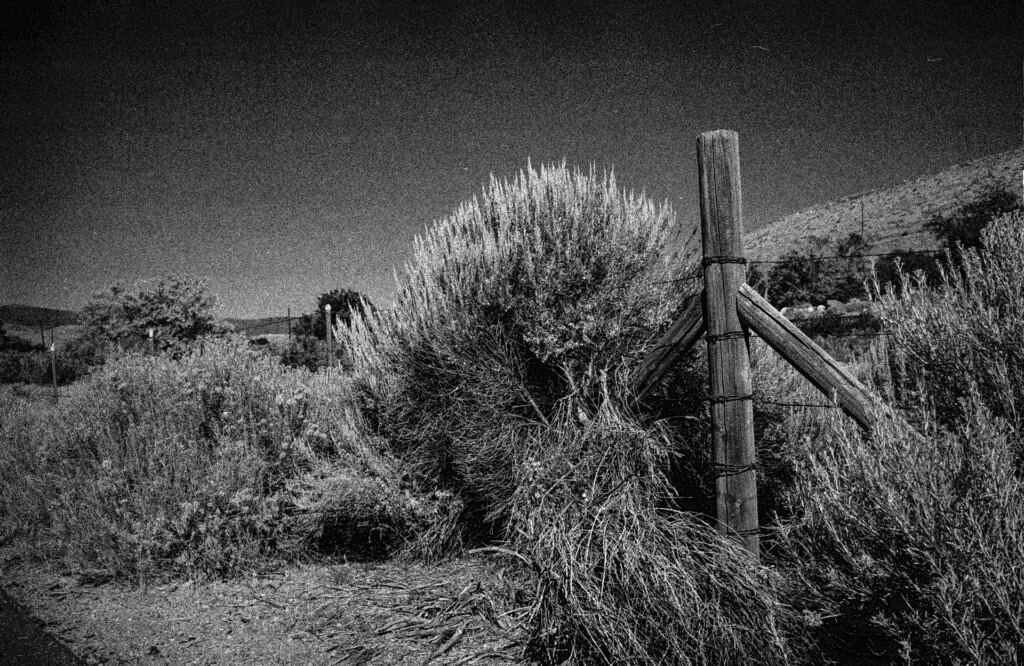
Sagebrush is not in any way threatened in this part of the world, yet I know it’s an important part of the ecosystem and the habitat of sagebrush, like so many other things is being rapidly encroached upon by civilization. Bearing that in mind, I was careful to take only a few sprigs from each of many different plants. I gathered both varieties indiscriminately and tried to pick a couple pounds so I could make more than one batch of developer.
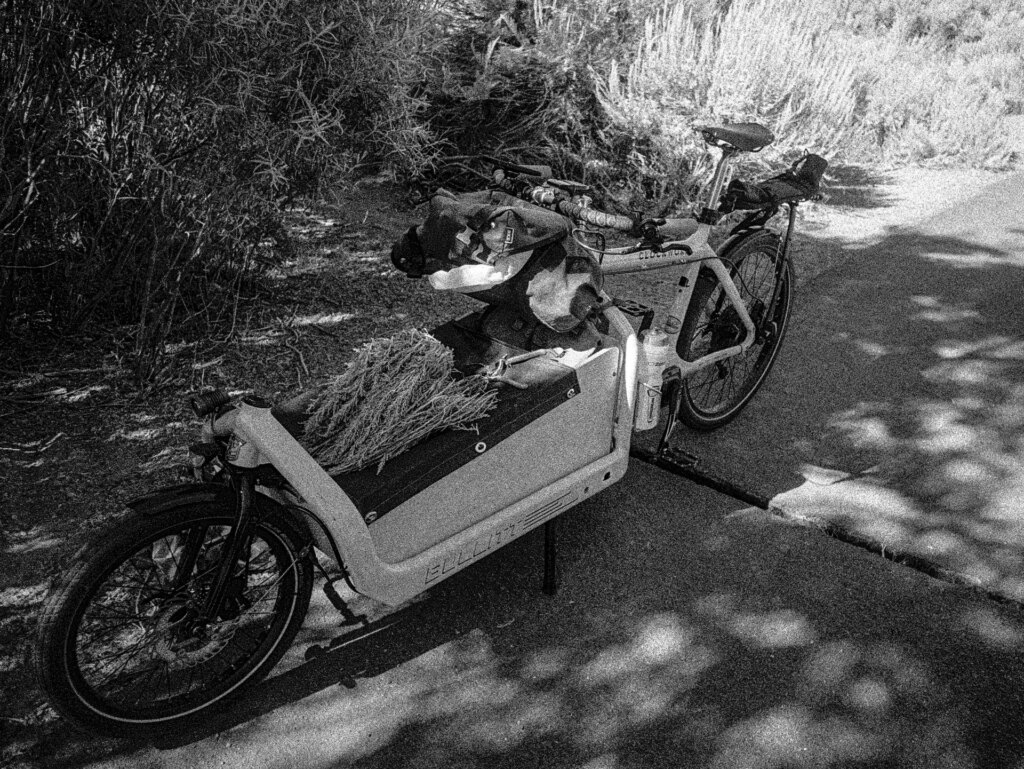
Making Artemisianol
Upon returning home, I thought I might treat the Sagebrush pretty much the way I had treated the Bladderwrack that I’d made developer from months ago.
I weighed out about 400 grams of sagebrush, placed it in a big spaghetti pot, covered it with 4 liters of water and boiled it for an hour.
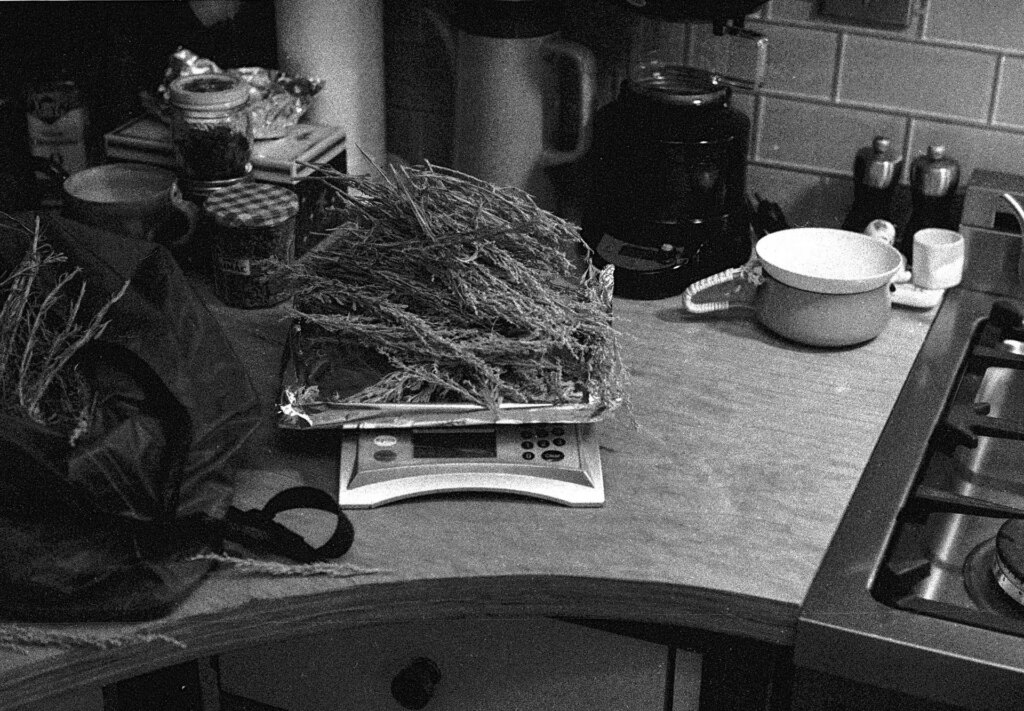
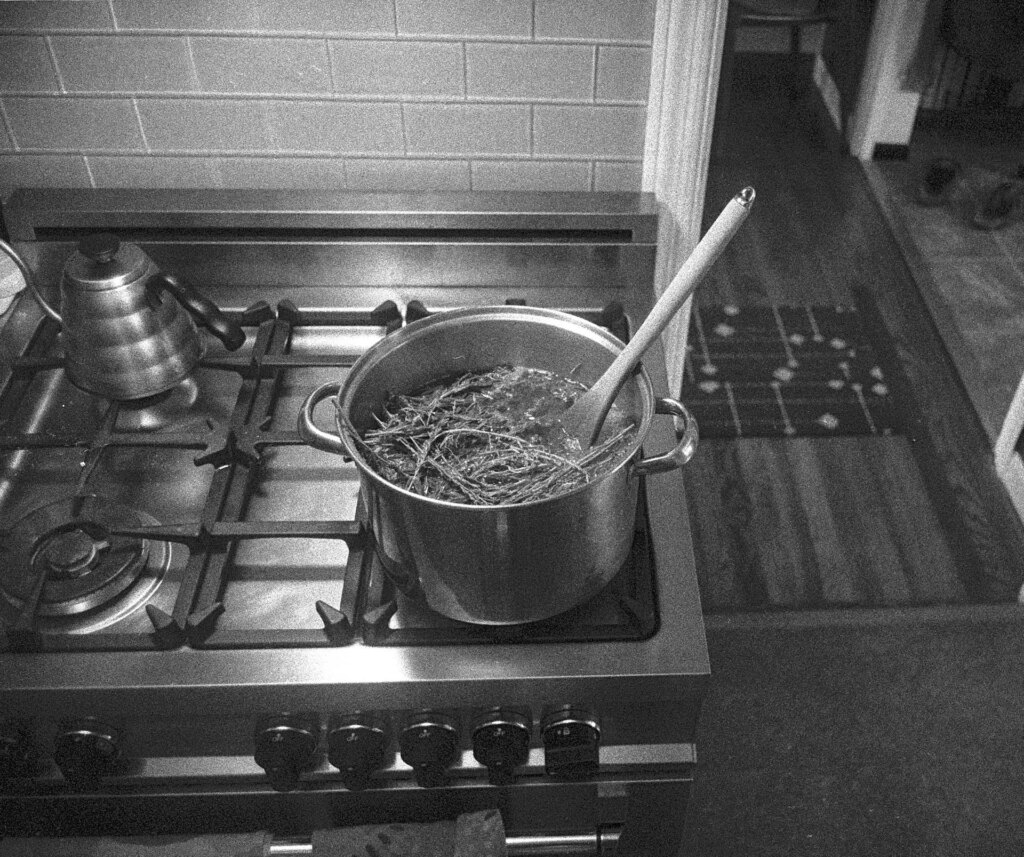
After boiling, I covered the infusion and left it to steep and cool overnight. In the morning, I strained it into another pot but realized that I had quite a lot of sagebrush brew, more than I could easily store in our small refrigerator, so I cooked it down for a while more with the lid off again so that I had just over a liter of concentrate, which I then filtered through cheesecloth, bottled and refrigerated.

Time for another disclaimer. If I was being even moderately scientific about this process, I would have bought a bunch of one kind of film, in both 35mm and 120 formats and done my tests with that. Instead all I have in the fridge is an odd assortment of films that I like, with no more than three of any one kind, so much for science.
I needed about 450ml of developer to completely fill my Ars-Imago Lab Box which I use for 35mm films so I mixed up a half liter of developer.
The Recipe
To 250ml of cold water I added 83g of Sodium Carbonate, stirred it in well and added 20g of Ascorbic Acid
(After shooting the first roll, I added .5g of Potassium Bromide to ostensibly slow overdevelopment down a bit.)
To this mixture I added 250ml of my sagebrush concentrate and heated the whole mixture to 82° F and developed for 15 minutes with intermittent agitation.
Update, The New Recipe:
This seems more versatile and less contrasty most of the time, this is almost straight off the YumYumSoups site cited at the beginning of the article:
600 ml Sagebrush Brew, this is condensed brew, i.e. it’s been cooked down to about half volume after the initial I hour boil and overnight cooling.
48 g Sodium Carbonate
12 g Ascorbic Acid
.6 g Potassium Bromide
Heat to 86° F, Develop for 15 minutes with intermittent agitation, 2 or 3 inversions per minute.
The First Roll Developed in Artemisianol
I had a roll of expired Eastman Kodak Polypan F on hand, I was more than a little impressed with the first roll I’d shot, it’s got great contrast and nice exposure latitude, it also has a beautiful glow to highlight areas that I really enjoy. This roll came out a little overdeveloped, but not too bad! These were shot with a Voigtlander Super Wide Heliar 15mm on my Canon IVSb2.
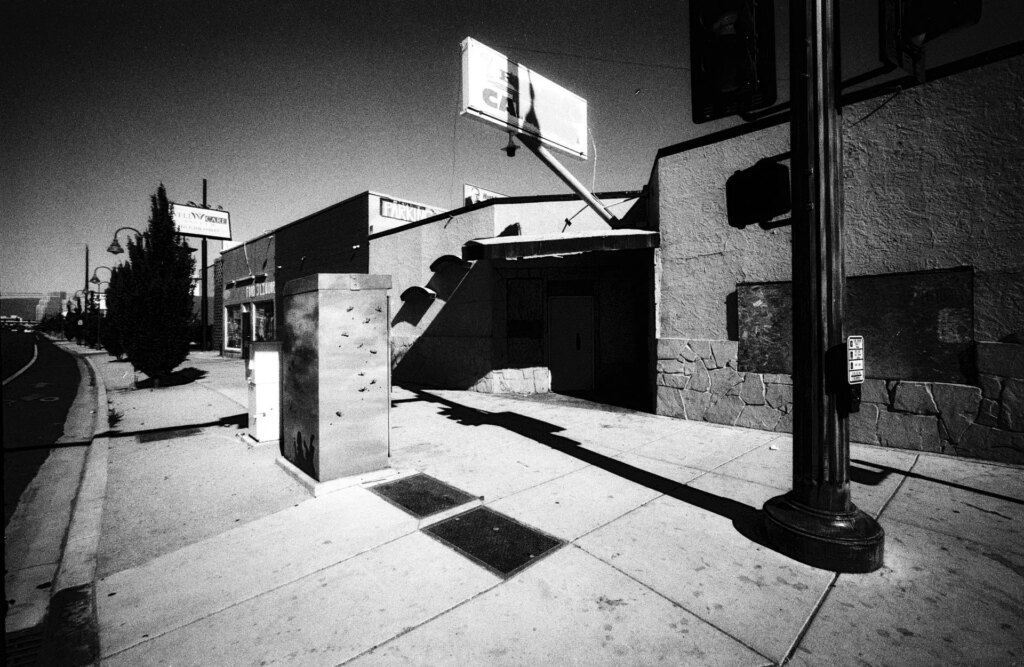
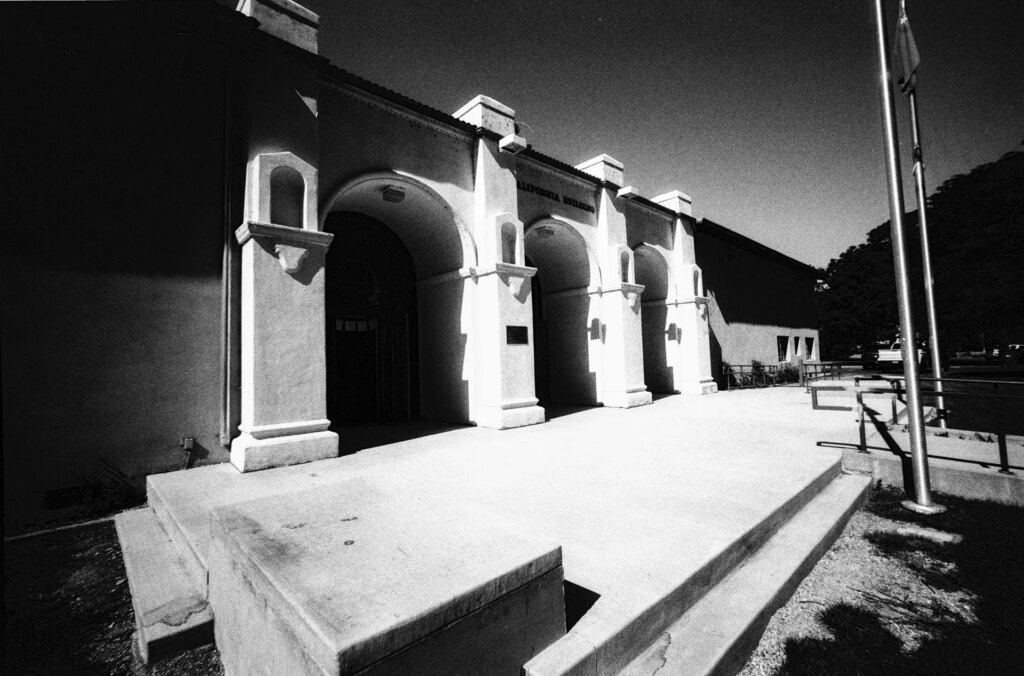
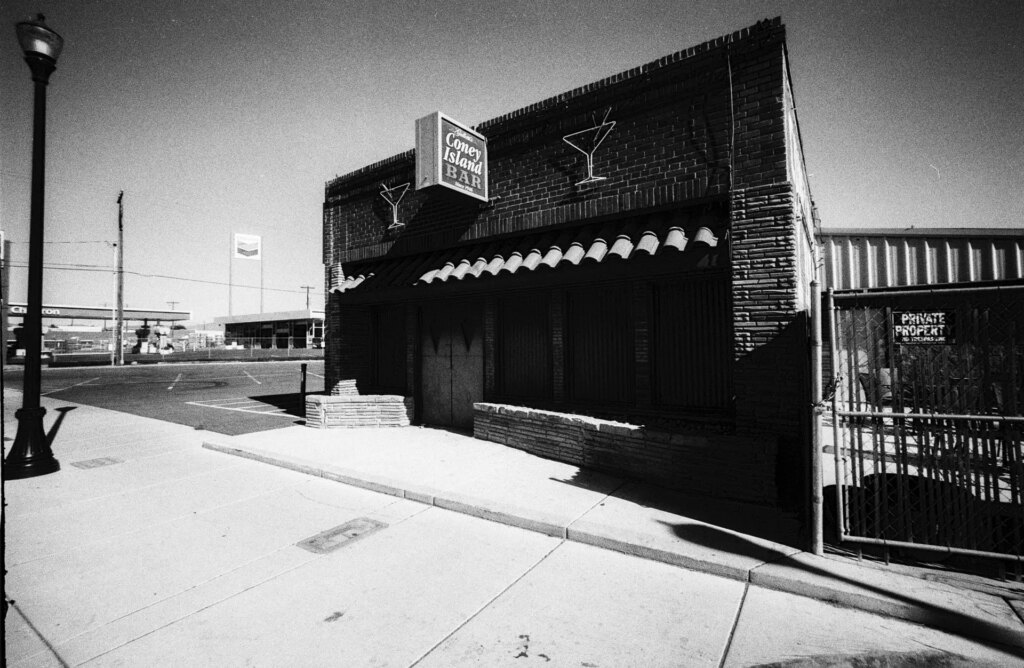

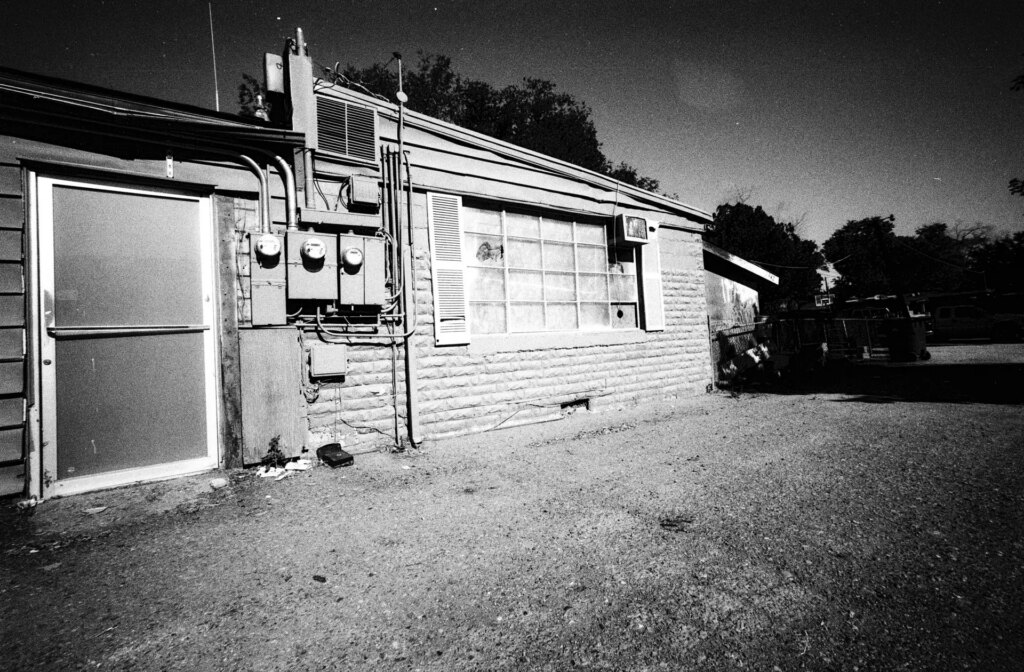
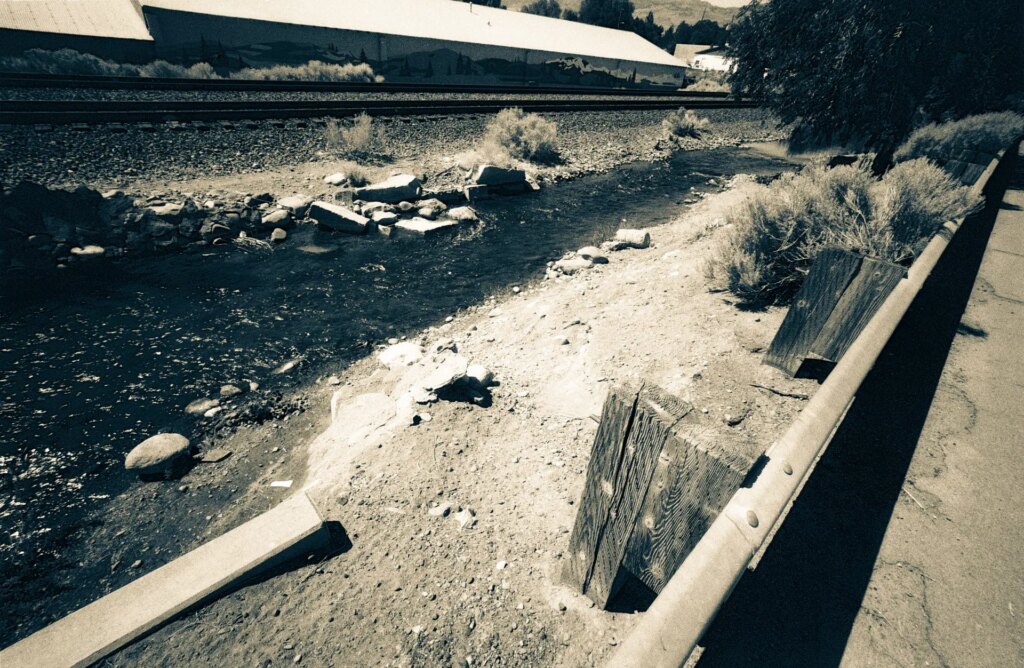
The Second Roll of Photographs
I’ve developed a total of three rolls in sagebrush now, the second and third had different technical issues mostly unrelated to the developer.
The second roll, Lomography’s Kino Fantome 8, was shot with two different lenses, an Industar 50 and my 27mm Lumenbox lens. Shots on this roll were also overdeveloped a bit and quite a bit overexposed as you’ll notice.

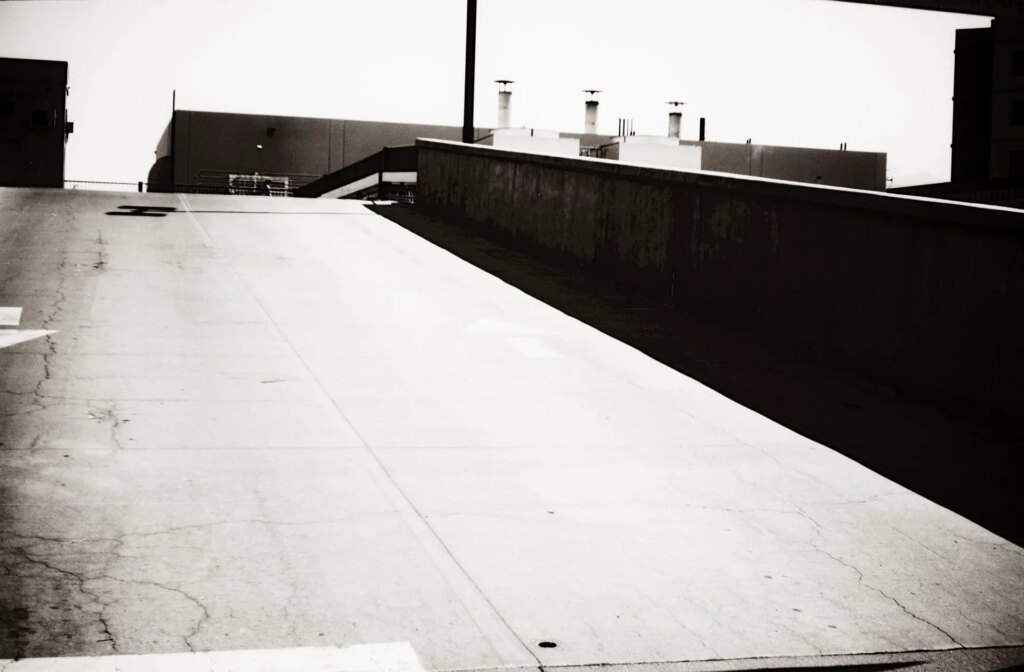
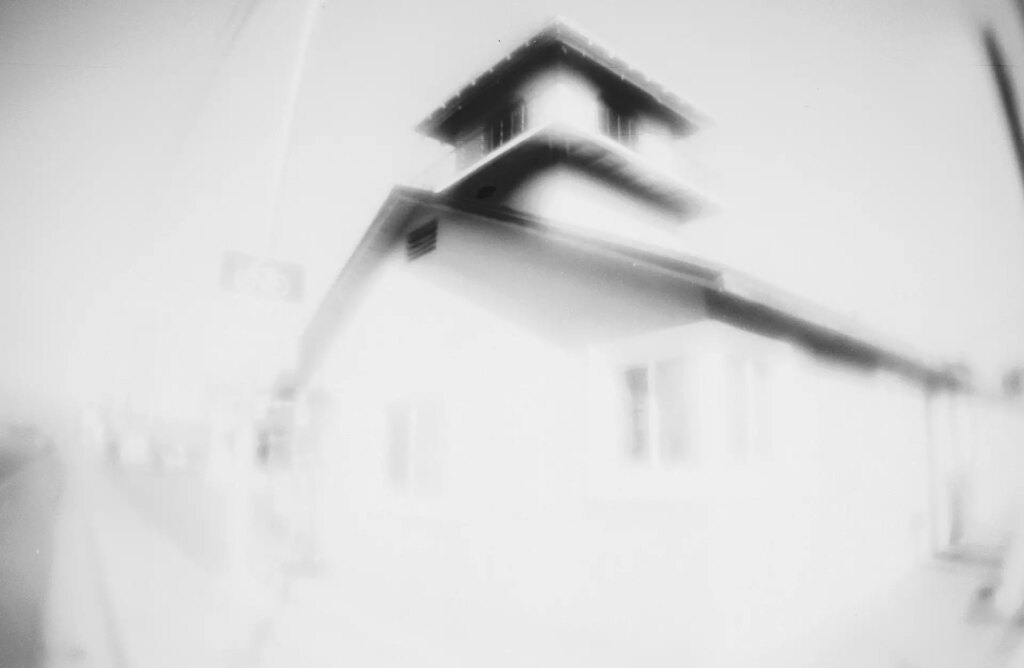
The Third Roll
The last roll I developed was 120 film (Lomography Potsdam 100) and development came out pretty well, I reduced development time to 12 minutes. The negatives had a lower contrast, somewhat foggy look to them. I know that Potsdam is a lower contrast film than what I’m used to, but I suspect that my fixer was going off. They also had a few other technical issues as you can see. This was shot with my Chroma Six:9 and Mamiya Sekor 50mm f/6.3 lens.
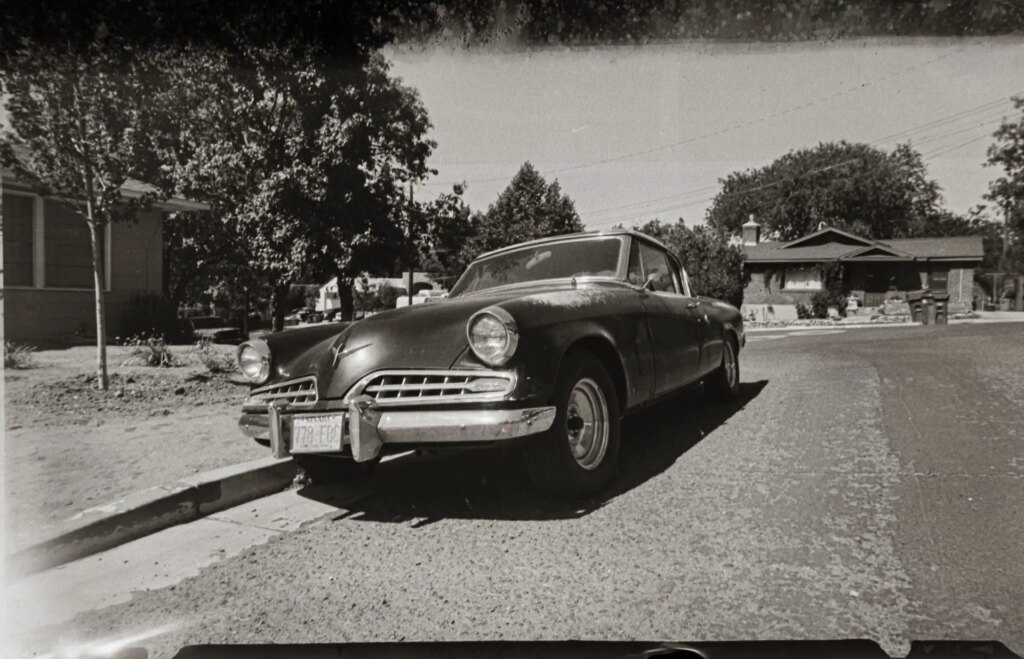
In Retrospect
I think I’ve been using too much sodium carbonate and I may reduce the amount of that.
I dried what was left from the first batch of sagebrush I picked and just brewed that up, it’s still steeping. I plan to continue on refining the recipe and testing it with different films. I think I may even be brave enough now to try it with my favorite black and white film, Film Washi S!
If you read this far, kudos to you for wading through all this and thank you for reading! Should you make some artemisianol for yourself, I’d love to hear about it! You can find more oddities like this on my little blog The Daily Lumenbox.
Share this post:
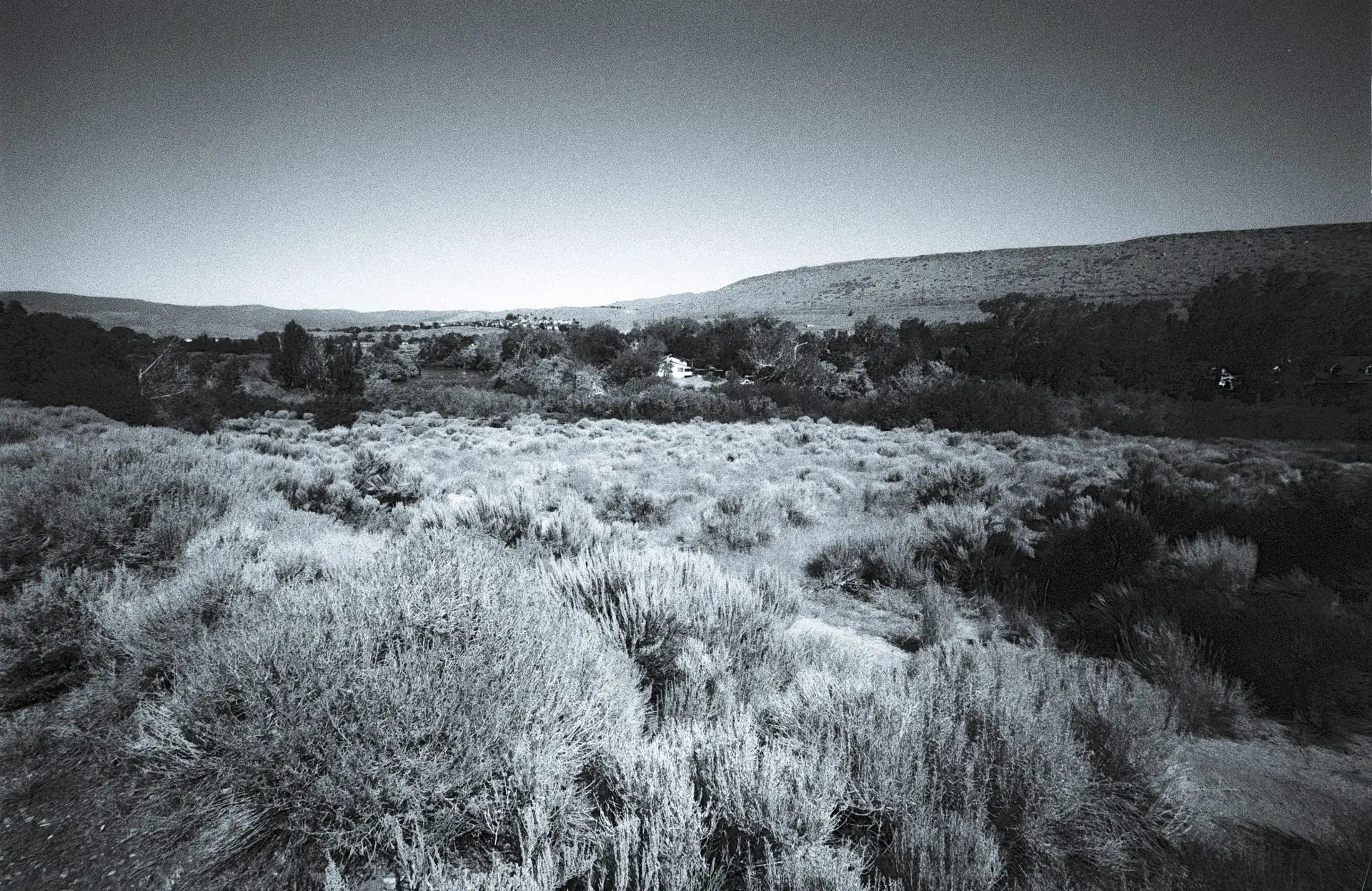








Comments
thorsten on Making Artemisianol, My Search for Big Sagebrush – By Sonny Rosenberg
Comment posted: 11/08/2022
Best from almost Potsdam ;))
/t
Comment posted: 11/08/2022
Rock on Making Artemisianol, My Search for Big Sagebrush – By Sonny Rosenberg
Comment posted: 11/08/2022
Comment posted: 11/08/2022
Steven G on Making Artemisianol, My Search for Big Sagebrush – By Sonny Rosenberg
Comment posted: 11/08/2022
Comment posted: 11/08/2022
John Squillace on Making Artemisianol, My Search for Big Sagebrush – By Sonny Rosenberg
Comment posted: 11/08/2022
John
Comment posted: 11/08/2022
Sacha Cloutier on Making Artemisianol, My Search for Big Sagebrush – By Sonny Rosenberg
Comment posted: 13/08/2022
Comment posted: 13/08/2022
Comment posted: 13/08/2022
Comment posted: 13/08/2022
Roman Dubravský on Making Artemisianol, My Search for Big Sagebrush – By Sonny Rosenberg
Comment posted: 15/08/2022
Comment posted: 15/08/2022